The human immunodeficiency virus (HIV) goes under the microscope this week. We find out how the virus hijacks cells to construct new HIV particles and hear how close scientists are to developing a vaccine to block infection. In the news, we learn how bitter taste receptors in the lungs could lead to new asthma treatments, how our ancestors enjoyed some veg with their meat and how gene therapy could offer a way out of depression. Plus, how Lego is helping university students build a creative career in the world of engineering...
In this episode
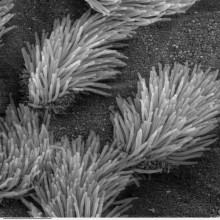
02:09 - Asthma discovery leaves a bitter taste in the... lungs?
Asthma discovery leaves a bitter taste in the... lungs?
It's well-known that human tongues can taste five sensations - sweet, salt, bitter,sour and the mysterious umami. This is due to different molecular receptors in our tastebuds. But research from scientists in the US has shown that bitter taste receptors actually play a role in our lungs as well as our tongues - and it could lead to new ways to treat asthma and other lung diseases that affect around 300 million people around the world, including me!
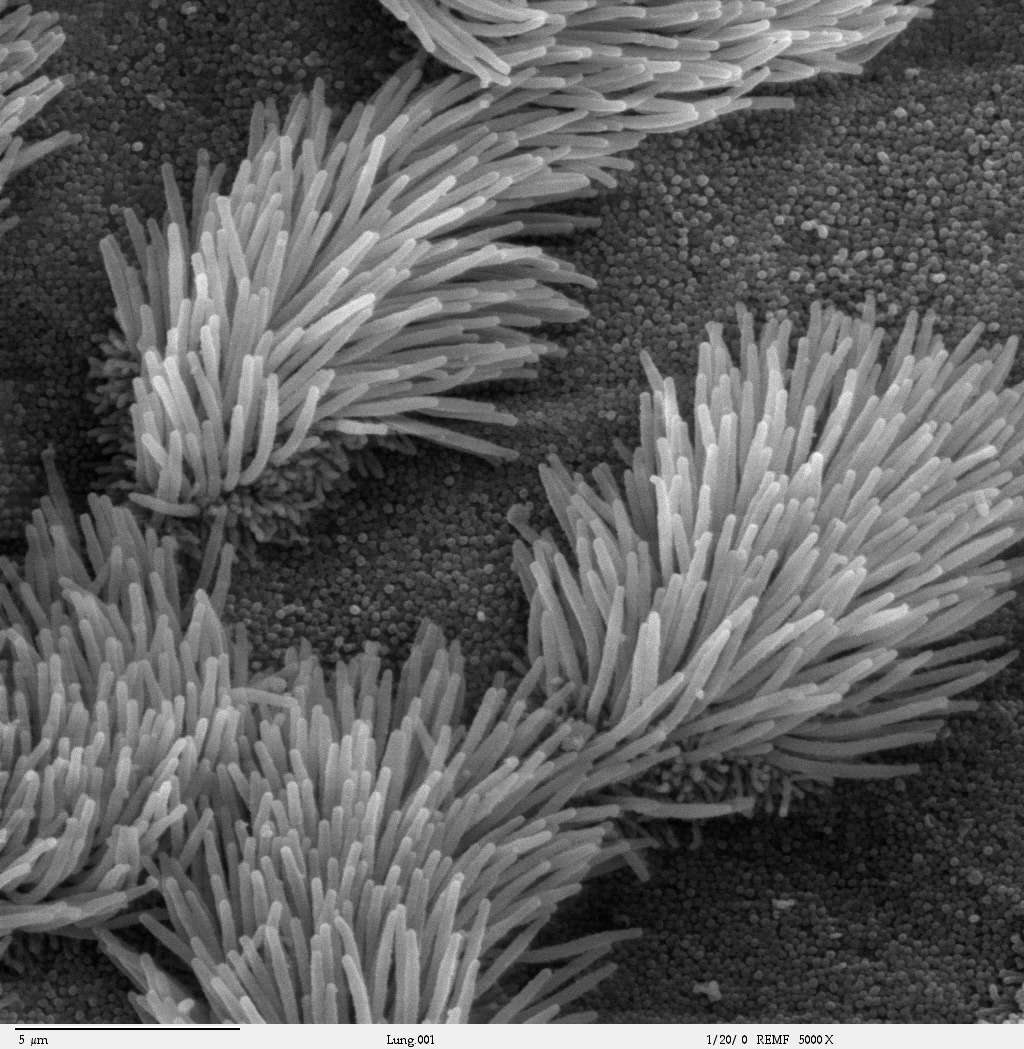 This work builds on
This work builds on
a discovery we covered on the show back in 2009, where researchers first discovered that the same receptors that detect bitter tastes on our tongues could also be found in our lungs, lurking on special hairy cells that line the airways. It's thought that they're there to detect nasty stuff in the air we breathe, and stimulate the lungs to get rid of them, for example by producing more phlegm. Now Stephen Liggett and his team at the University of Maryland have published a paper in the journal Nature Medicine showing that the same bitter receptors can be found in airway muscle cells too.
The researchers thought that stimulating these bitter receptors with bitter chemicals might cause muscle cells to contract, narrowing the airways and causing coughing, helping to avoid inhaling any nasty stuff. But in fact they found the opposite - bitter chemicals caused a massive spike in calcium within the muscle cells, making them relax, and making airways become more open. And this isn't just a small effect - it was three times larger than the effect they saw with chemicals called beta-adrenergic receptor agonists - molecules that are commonly used to relieve the airway constriction caused by asthma and other lung diseases.
The scientists think that stimulating these bitter receptors could be a powerful way to treat asthma or other diseases such as chronic obstructive pulmonary disease, or COPD. There are thousands of naturally-produced and man-made bitter chemicals in the world, so at least one - and probably more - might turn out to be suitable as a drug. And the lab research suggests that combining bitter receptor activators with current asthma treatments - such as the beta-adrenergic receptor agonists I mentioned earlier - might pack even more of a punch, as the drugs work in different ways on the lungs. But it might mean that your asthma inhaler tastes pretty nasty!
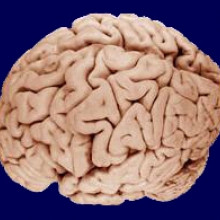
04:44 - Gene Therapy for Depression
Gene Therapy for Depression
A gene injected into one region of the brain might hold the key to treating depressed patients who fail to respond to conventional therapies.
Writing in Science Translation Medicine, Cornell-based scientist 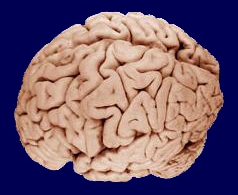 Brian Alexander and his colleagues show how manipulating a gene called p11 in a brain region known as the nucleus accumbens can alter behaviour.
Brian Alexander and his colleagues show how manipulating a gene called p11 in a brain region known as the nucleus accumbens can alter behaviour.
Mice genetically engineered to lack the gene, which plays a role in sensitising nerve cells to serotonin, one of the brain's feel-good nerve transmitter chemicals, display behaviours consistent with depression, including a lack of interest activities that control animals find rewarding. But, by using a modified adeno-associated virus as a vector to add the gene back into the nucleus accumbens, which is known to be the brain's main pleasure centre, the team found that the previously p11-deficient mice began to behave like their normal control counterparts.
Intriguingly, brains from depressed humans studied post mortem show that the human p11 gene is also present at much lower levels in the same brain regions of these subjects, suggesting that what works in the mice might also work in man. And as clinical trials are already underway in patients with Parkinson's Disease to add therapeutic genes that can remedy some of the symptoms of the disorder, the same techniques could be used to deliver extra copies of p11 to depressed people.
But, in the nearer term, researchers will also now focus on finding other ways to manipulate the activity of the p11 gene, which could offer a range of new ways to fight depression.

08:02 - The Most Distant Object Ever Confirmed
The Most Distant Object Ever Confirmed
with Professor Michael Bremer, Bristol University
This week, an international team of astronomers have confirmed the sighting of the most distant object ever seen. Ben Valsler spoke to Bristol University's Professor Malcolm Bremer to find out more.
 Malcolm - We were trying to identify extremely distant galaxies - in this case, a single galaxy - so that we can understand the very early stages of galaxy evolution. We're seeing this galaxy very early on in the history of the universe. We think therefore that it will tell us a lot about the early stages of how galaxies form and then evolve from the very small building blocks, such as this galaxy, into the larger galaxies like the Milky Way that we see today. And also, we are seeing this object at a particular time in the universe where there is a transition in the state of the gas that fills the universe, and we hope to be able to use this galaxy as a probe of that.
Malcolm - We were trying to identify extremely distant galaxies - in this case, a single galaxy - so that we can understand the very early stages of galaxy evolution. We're seeing this galaxy very early on in the history of the universe. We think therefore that it will tell us a lot about the early stages of how galaxies form and then evolve from the very small building blocks, such as this galaxy, into the larger galaxies like the Milky Way that we see today. And also, we are seeing this object at a particular time in the universe where there is a transition in the state of the gas that fills the universe, and we hope to be able to use this galaxy as a probe of that.
Ben - So if we come back to using the light from this galaxy as a probe to measure cosmology a bit later on, first of all, tell me a bit more about this galaxy. It's at what we think of as a very large red shift. Now what does that actually mean?
Malcolm - The red shift is a measure of how much the universe has expanded between the time that the photons were emitted by the galaxy, the radiation was emitted by the galaxy, and by the time we receive it. So a red shift of about an 8 ½ actually relates to the universe stretching by about 9 ½ times in linear dimension.
Ben - And what does that mean about how old the light actually is that's getting to us?
Malcolm - That actually means that the light was emitted about 600 million years after the Big Bang, and we are receiving it now, 13.1 billion years later. As well as the time it takes for the light to reach us, also, the light that we're interested in, which is originally emitted in the ultraviolet, we receive in the infrared because the expansion of the universe stretches all of the wavelengths of radiation coming from the galaxy by that much, by the time we actually receive the radiation.
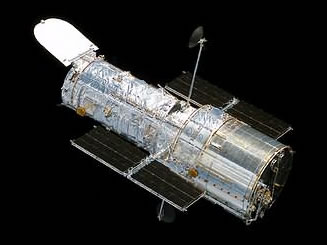 Ben - So, this new galaxy, is there anything particularly special about it that enables us to be able to see it, even though it's that far away?
Ben - So, this new galaxy, is there anything particularly special about it that enables us to be able to see it, even though it's that far away?
Malcolm - Well we hope not because what we're trying to characterise is the typical galaxy at these distances. The area of sky that was searched in order to find this object was searched using the Hubble Space telescope with a brand new infrared camera by other astronomers and they came up with a catalogue of objects that they believe to be at these great distances. Any one of them could be at the distance of this object or even slightly larger. So what we're actually hoping for is, this is a typical, very, very distant object. It just happens to be, because it takes an awful lot of effort, that this is the first one that we've confirmed to be this far away.
Ben - So you mentioned earlier that we can use it to probe cosmology really. As this light was emitted when the universe was very young, what can we determine about the state of the universe, just from this light?
Malcolm - Well, we expect that this object is observed as the hydrogen that fills the universe changed in state. Previous to this time, the hydrogen was cool, neutral material like the gas within the atmosphere of Earth. But then, at some point, something ionised that gas, and the effect of that is that the neutral hydrogen is opaque to much of the radiation that's emitted by these galaxies. But then as it gets ionised, charged effectively, and heated, it becomes transparent, and you can see the light escaping from these galaxies. It's an important step in the evolution of the universe. Knowing when it started, when this process ended, and what was causing the heating, the ionisation of the gas, is actually an important set of questions for astronomers. If we understand that, we understand an awful lot more about the early universe than we currently do.
Ben - So looking at the spectrum of light from this enormously distant galaxy - not only can we tell how far away it is, how much space is expanded, but by looking at the bits where this gas has absorbed some of that light in order to become ionised, we can also start to get an idea of the conditions that were around this galaxy.
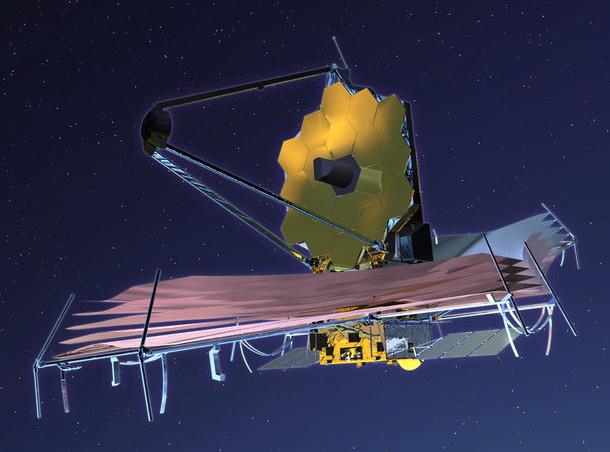 Malcolm - That's right and one thing that's peculiar about this galaxy is, although we've detected it and we've detected a signature of hydrogen within it, it doesn't seem to be luminous enough for itself to have converted the hydrogen that's around it on the larger scale, by itself, from neutral to ionised gas. We suspect therefore that what we're seeing is the signature of other galaxies that were either very bright before the time that we're actually seeing this galaxy, or just lots of smaller galaxies which are too faint to detect, which have actually done the excavation of the neutral hydrogen for that object. It on itself, I don't think would be able to actually carry out that process.
Malcolm - That's right and one thing that's peculiar about this galaxy is, although we've detected it and we've detected a signature of hydrogen within it, it doesn't seem to be luminous enough for itself to have converted the hydrogen that's around it on the larger scale, by itself, from neutral to ionised gas. We suspect therefore that what we're seeing is the signature of other galaxies that were either very bright before the time that we're actually seeing this galaxy, or just lots of smaller galaxies which are too faint to detect, which have actually done the excavation of the neutral hydrogen for that object. It on itself, I don't think would be able to actually carry out that process.
Ben - So that's evidence of other galaxies that are still too faint for us to see with current technology, but evidence that they must have been around in order to have that effect. What's the next step for us? How do we start to try and look for these galaxies?
Malcolm - These observations clearly push right at the limit of what we're able to do with current technology with both space based and ground based telescopes, but there will be technological improvements that will happen quite soon within astronomy. For example, we will get new instruments on the ground based telescopes that we're using at the moment. But also, over the next few years, there will be the successor to the Hubble Space telescope - this is the James Webb Space telescope. And then on the longer term, we hope to build extremely large telescopes in the ground with mirrors of size 30-40 metres, whereas the current typical size of a large telescope is an 8 metre mirror. That will be much, much more sensitive to these kinds of objects and hopefully we will not just be able to do the detection of these objects, but we will get much better spectra of them, and therefore be able to tell you much more about their physical state.

14:39 - Vegetables with your Mammoth Steak Sir?
Vegetables with your Mammoth Steak Sir?
Archaeologists working a several sites across Europe have found evidence that our stone age ancestors were a dab-hand in the kitchen much earlier than we first thought.
Writing in PNAS, Italian researcher Anna Revedin  and her colleagues have isolated and identified grains of starch stuck to stone tools, including a primitive pestle and mortar, recovered from three archaeological sites in Italy, Russia and the Czech Republic.
and her colleagues have isolated and identified grains of starch stuck to stone tools, including a primitive pestle and mortar, recovered from three archaeological sites in Italy, Russia and the Czech Republic.
Critically, these sites, one of which contains the remains of two mammoths and a large hearth, date back to about 30,000 years ago, a time when early humans were believed to be principally carnivorous and less keen on vegetables than the average teenager.
But careful microscopic examination of the tools recovered from the sites confirms that their users were collecting starch-rich plants, principally rhizome-bearing species, which they were presumably grinding to a primitive flour.
Moreover, to make the food palatable and liberate sufficient calories to make the exercise worthwhile, they must also have been cooking the proceeds, the team argue.
Large scale plant processing is known to have been well established when the first farms appeared in Mesopotamia about 12,000 years ago.Before this time, however, incorporation of plant products into the average human diet is much less well understood.
Now we know that even early Europeans were partial to a palaeolithic meat and two veg too...

16:19 - Planet Earth - Measuring Earth's Magnetic Field
Planet Earth - Measuring Earth's Magnetic Field
with Alan Thompson, British Geological Survey
Kat - The Earth is under constant bombardment by a 1 million mile per hour maelstrom of charged particles that continuously stream out of the Sun. We're protected from this solar wind by the Earth's magnetic field luckily, but a sudden surge in solar activity can nonetheless overcome this protective shield, leading to damage the satellites and power lines. A dramatic example of this occurred in the mid-1800s and Planet Earth podcast presenter Richard Hollingham went to meet Geomagnetist Alan Thompson in the archives of the British Geological Survey in Edinburgh to uncover magnetic records from the event...
Richard - ...It's all wrapped-in in tissue paper.
Alan - Because we want to preserve it.
Richard - It almost looks like ancient parchment, doesn't it - with this wiggly line on. This was from photographic paper and then the marks along it... This one here, what's this - September - no, August 31st, 1859.
Alan - It runs from August 31st into the 1st of September and we've got two traces here. One of them is the variation of the compass needle on that day. Now most of the time, it doesn't change too much, it's just a few 10th of a degree change on a normal day, but on this event, towards the end of the record, there's a sudden burst.
Richard - Wow! It's right off the scale.
 Alan - That's huge and that marks the arrival of x-ray radiation from the Sun. Something's happened on the Sun on that day and we're seeing the first record of that. The way that works is the x-rays ionise the gas in the atmosphere and those electrical currents cause magnetic field, and that's what our instruments measure. So we've picked that up and we know this event followed what was known as a solar flare, the first one that was witnessed by eye by the Astronomer Richard Carrington, so his claim to is that it's now named after him. It's the Carrington Event of 1859 and it's the biggest magnetic storm that we think we have in our records.
Alan - That's huge and that marks the arrival of x-ray radiation from the Sun. Something's happened on the Sun on that day and we're seeing the first record of that. The way that works is the x-rays ionise the gas in the atmosphere and those electrical currents cause magnetic field, and that's what our instruments measure. So we've picked that up and we know this event followed what was known as a solar flare, the first one that was witnessed by eye by the Astronomer Richard Carrington, so his claim to is that it's now named after him. It's the Carrington Event of 1859 and it's the biggest magnetic storm that we think we have in our records.
Richard - So in 1859, would anyone have noticed that? If they weren't measuring it, would anyone on Earth have noticed this solar activity?
Alan - Yeah. Well, this was the Victorian era and we had a telegraph system. Some people have dubbed it the "Victorian internet". The telegraph operators normally would use batteries to power the system, but when the Aurora Borealis was in full swing, they didn't need to. They just disconnected and the natural electromagnetic variations from this big solar activity, this magnetic storm, could power the Victorian internet directly.
Richard - So it could power the telegraph directly from the Sun.
Alan - Yeah and there's reports of fires and people getting electric shocks as well, so it was not a trivial thing happening at that time.
Richard - Okay, Alan. We've come to the opposite end of the building. We're up on the roof now and this is how you do it these days.
Alan - So nowadays, we have a series of automatic instruments that run at remote locations called "magnetic observatories" and we have three of them in the UK, and the instrument that we've got in front of us is one method that we use to calibrate those automatic instruments.
Richard - Now Chris Turbot, you've set this instrument up for us. What can it measure? It looks almost like a surveyor's tool.
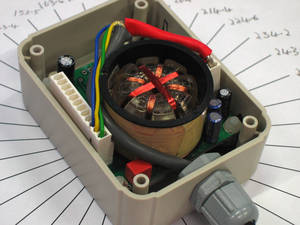 Chris - This is exactly what it is, you'll probably see surveyors using these at the side of the road. It's a yellow Theodelite sitting on a wooden tripod. It's a little bit different and that all of the magnetic content has been taken out, so there's no iron and steel left in there. It's all been replaced with copper and brass, etcetera. It has been adapted because we put on the top of it a fluxgate magnetometer and it's a little instrument that's sensitive to the direction of the magnetic field along which it's pointing and the idea of it is that we can rotate that around and search for the direction of the magnetic field. [beeping noise] That's telling me that we are actually off slightly and if I just rotate the theodelite around with the magnetometer on the top of it, it will go through. Just went through there, just go back a little bit until we - there we go. That's it, zero. So that's it lined up.
Chris - This is exactly what it is, you'll probably see surveyors using these at the side of the road. It's a yellow Theodelite sitting on a wooden tripod. It's a little bit different and that all of the magnetic content has been taken out, so there's no iron and steel left in there. It's all been replaced with copper and brass, etcetera. It has been adapted because we put on the top of it a fluxgate magnetometer and it's a little instrument that's sensitive to the direction of the magnetic field along which it's pointing and the idea of it is that we can rotate that around and search for the direction of the magnetic field. [beeping noise] That's telling me that we are actually off slightly and if I just rotate the theodelite around with the magnetometer on the top of it, it will go through. Just went through there, just go back a little bit until we - there we go. That's it, zero. So that's it lined up.
Richard - Now, what's the point of doing this other than to build a past record? Can we use it to predict what's going to happen?
Alan - Well one of the things we do is we exchange data with other institutes around the world and that allows us to build up models and maps of how field is changing. And in part of that process, yes, to some extent, we can predict the long term change in the magnetic field, but realistically, only up to about a year ahead, which is why we have to continue this process of measuring and modelling, to build better maps. And with a bit of scientific insight, yes, we'd like to push that a bit further ahead than just a year ahead.
Richard - And do you think in our lifetimes, we'll see anything like that 1859 event?
Alan - There's every chance of it. It's very hard to quantify how frequently such an event should come around, but the Sun is very variable and it's entirely possible that we can get an event like that - well, maybe every 100 years, but it's hard to tell and that's one of the reasons why we have to keep looking into the records to and get a better understanding of just how frequent that might happen.
Kat - That was Alan Thompson from the British Geological Survey, talking to Richard Hollingham. And if you enjoyed that, there are lot'sof more of Richard's podcasts as well as links to other Planet Earth resources at thenakedscientists.com/planetearth.

21:38 - Naked Engineering - Engineering with Lego!
Naked Engineering - Engineering with Lego!
with Andrew Gee and engineering students, Cambridge University
Meera - This week on Naked Engineering, Dave and I have returned to the engineering department here at the University of Cambridge, but it's all a bit different this time, as we're surround by hundreds of first year students. And they all appear to be playing with - well, Lego. I'm sure there's got to be some kind of engineering aspect to this. Dave, what can Lego show us about engineering?
Dave - I was essentially brought up on Lego and the wonderful thing about Lego is that it's very, very quick to take an idea in your head and convert it into a 3D object. The 3D object might not be quite the same as traditional engineering materials. It's a bit wobbly, it's made out of plastic. But even with the old fashion Lego which I grew up with you could build all sorts of wonderful things. And it appears to have moved on somewhat in the intervening years!
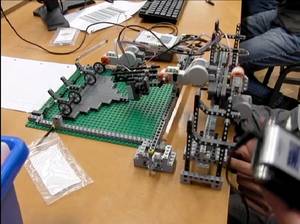 Meera - Now, the course organiser who's put this all together - is Andrew Gee from the University of Cambridge. Hello, Andrew.
Meera - Now, the course organiser who's put this all together - is Andrew Gee from the University of Cambridge. Hello, Andrew.
Andrew - Hello.
Meera - What type of Lego and how much of it are the students actually given?
Andrew - This is completely different Lego to the sort of Lego I grew up with as a kid. So when I think of Lego from 35 years ago, I think of little duplo bricks that you'd stick together, but when I saw this, I couldn't believe how much it's come on. So we've got Lego with motors, sensors, actuators and microprocessors; and technical parts, they can build gearboxes and springs, and levers, and all sorts of complicated mechanisms. It's a fantastic medium for constructing engineering systems, and actually learning a lot about the principles behind engineering. It's very open-ended, we've given the students an opportunity to build whatever sort of machines they want. Some of them have built machines which have taken them into areas of engineering that we don't even cover until the second year, all illustrated on a Lego system.
Meera - Now you have a lot of students here though working at the moment and in this session alone, it's half of the year. So it's 165 students. Has anything stood out in particular, amongst all of the groups here?
Andrew - I think what's really stood about amongst all the groups is they were so keen to build something different and come up with machines I wouldn't have dreamt of building. They've come up with machines that will fire a projectile at a target that you position at an arbitrary position, using the projectile theory that they've learned at school, but they're putting it into practice with the Lego. And they'll also the see the limitations of what they've learned at school and that the sums won't quite work because they don't take into account air resistance, and then they'll have to try and take that into account to learn a bit more. So what's really impressed me most has been their willingness to actually do something original rather than follow instructions.
Meera - I'm quite excited to see what's going on. So Dave and I are just going to go for a wander and see what the groups have been up to.
Dave - It looks absolutely fascinating. To be honest, I'm very, very jealous.
Josie - Hi. I'm Josie Hughes.
Catherine - Hi. I'm Catherine Sams.
 Meera - So Josie and Catherine, what have you made here? It looks very interesting.
Meera - So Josie and Catherine, what have you made here? It looks very interesting.
Catherine - It's meant to be like a Lego photocopier.
Josie - Well it's not really like a conventional photocopier. We have a little car that's got a sensor underneath that can detect the colour of the paper. When the light sensor sees that it's white, it just moves along, but when it sees it's black, it stops and puts the pen that's attached to the car down. When the pen's down, then if the car moves forward again, so the pen's kind of dragging along, drawing a line. And then as soon as it sees white, it stops and moves the pen up. It'll do that all the way along and then it goes back, and it'll move the paper a little bit, and then start all over again. So effectively, it kind of copies it along in lines.
Meera - And how is it working so far?
Josie - It's okay. There are a couple of hitches with the pen, pressing a bit hard on the paper and making holes in the paper, but just things that we're trying to even out so it goes really smoothly.
John - Hi, there. I'm John Hopkins. We've got here a robot device which manoeuvres around the keypad of a phone and will send a text for you.
Dave - So you basically got three axes of movement there?
John - Yeah. We've got forwards, backwards for moving down the numbers and then we go out to a rotate between say, a 2 or 3 or 1.
Dave - I guess another - something which will push down?
John - Yeah, so we've got a motor that turns a small pivoting arm to press the button and the keypad noise once the button's been pressed, in fact releases the motor.
Dave - So you got an audio sensor there that is detecting the sound.
John - Yeah.
Dave - So how is it going?
John - Pretty good, yeah. There's a few difficulties as always. Background noise in fact, it may be, that's giving us a few problems because you get a nice spike with the keypad tone.
Dave - But if someone hits the table or something, you're picking that up...
John - So it just seems to throw it up a little bit.
Dave - So, how quickly will it text? Any competition with a 13-year-old yet?
 John - No, not a popular one, but I think if you were working on the computer, you had to send a text, you could write a text out on the computer, press send, leave it running alongside you, not worrying about how fast it's going to send, and then 5 minutes later, you may well have sent your text.
John - No, not a popular one, but I think if you were working on the computer, you had to send a text, you could write a text out on the computer, press send, leave it running alongside you, not worrying about how fast it's going to send, and then 5 minutes later, you may well have sent your text.
Hugh - Hello. I'm Hugh Carlson and I've made - well, me and my team have made a two-speed automatic transmission car.
Meera - Tell me a bit more about this car. So it's about 30 centimetres in length anyway, but what's it comprised of? What's all going on inside it?
Hugh - We've got one motor controlling the gearbox and that just drives straight into a drive shaft of the gearbox, and then they have an output onto the rear wheels. We have one motor controlling the gear transmission which slides the gears across to change gear whilst it's running, and then we have another motor attached to a steering column at the front which is responsible for choosing where it goes. And then in front of that, we have an ultrasonic sensor for detecting whether the ground in front of it is going up or down, and thus, whether we come across a hill or a trough.
Meera - A big part of it is problem solving. So what problems have you encountered whilst making this and what have you thought about to overcome them?
Hugh - One of the big ones which we had today was, we've discovered the engines which drive this can't do enough force at low speeds, so we have to add an extra set of gears to step down the motor again so that it can run on high revs and still have the force output.
 Meera - And how's it functioning? Are we able to see this in action?
Meera - And how's it functioning? Are we able to see this in action?
Hugh - Yes.
Meera - Okay, so it's starting up. So you've got it moving along a desk now and you've got it going up a slight ramp. So that's how it's detecting the change in elevation.
Hugh - Yes. It's a range detector on the front and it basically - if it suddenly changes quite quickly... Oh, sorry! The gearbox just broke.
Meera - More problem solving there, so that's good.
Hugh - Yes, there's a lot of it.
Meera - And I guess lastly though, have you enjoyed it?
Hugh - Yes, a great deal. It's playing with Lego again. Who doesn't enjoy that?
Meera - Now Andrew, Dave and I have had a good wonder around. We've seen photocopiers, pendulums, steam engines, as well as cars, as we'd hope to see too. What are you hoping they walk away with? So what kinds of skills will they hopefully now use over the rest of their time here?
Andrew - Lots of things really. I mean, from working in teams, they're all working in teams of three, the three was intentional. Three creates a bit of interpersonal conflict which is very real-world and it's a good lesson for them to learn. Simple things like basic engineering vocabulary. They all now know what a pin jointed truss is and what's a bearing is, and what's a gear is. So even if it's just vocabulary they take away. Importantly, they've learned to think in 3 dimensions, they've learned to program in MAT LAB which is a very useful engineering programming language that they'll be seeing a lot of in the next three years.
Meera - So I'll take it then you'll definitely bring this back for next year's first years?
Andrew - Absolutely, definitely. No question about it.
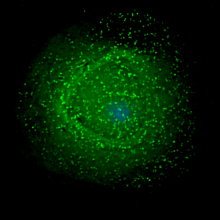
30:10 - Assembling HIV - How HIV uses your own cellular mechanics
Assembling HIV - How HIV uses your own cellular mechanics
with Dr Mark Marsh, University College London
Kat - HIV is the agent that causes AIDS and is responsible for probably the worst pandemic that human kind has ever encountered. According to UNAIDS, there were up to 36 million people living with the virus in 2008 and in that same year, there were about 7,500 new HIV infections occurring every single day, and about 7,000 people dying of HIV related illnesses every day. If we're to halt the spread of this disease, we need to understand the detailed workings of this virus, in order to develop new drugs and vaccines, and one scientist who's working on how the virus hijacks our cells is Mark Marsh from University College London who joins us. Hello, Mark.
Mark - Hello, Kat.
Kat - Hello. Now, what I'd really like to find out from you is, what is HIV? How do people catch it? How does it get into our cells? How does it multiply? Tell us about HIV, what's it like?
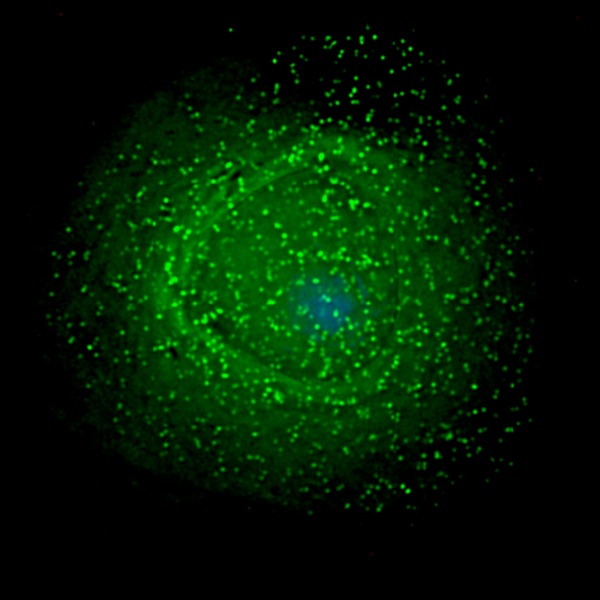 Mark - Well, HIV is a virus of the retrovirus family. It's a member of the group of so-called 'lentiviruses.' This is a subfamily of retroviruses. And all retroviruses have the common feature that their genome is a piece of RNA. Normally, lentiviral particles will package two copies of that genomic RNA, and the feature of these viruses is that once they've penetrated a host cell, they carry an enzyme in the virus particle that can copy the RNA into DNA. And that DNA can then be targeted to the cell nucleus and it can be integrated into the genome of the host cell, so it becomes an integral part of the genetic composition of the host cell. These particles are small. You can imagine them to be about the size of a football compared to Wembley Stadium or an orange on the surface of a circus tent, and the RNA genome has to be wrapped up within a protective layer for transmission from cell to cell, and that layer in the case of retroviruses and lentiviruses is actually a piece of membrane derived from the host cells. So it's exactly the same material that lines the surface of cells and what has to happen during the transmission phase is that viruses have to be put together within an infected cell so they have to assemble, and form this membrane around their genetic material. They then are transferred to a new target cell. They have to recognise that target cell by docking to receptors, and then they undergo a so-called 'fusion reaction' where the membrane of the virus fuses with the target cell membrane and that inserts that RNA then into the target cell where the whole process of that replication then proceeds.
Mark - Well, HIV is a virus of the retrovirus family. It's a member of the group of so-called 'lentiviruses.' This is a subfamily of retroviruses. And all retroviruses have the common feature that their genome is a piece of RNA. Normally, lentiviral particles will package two copies of that genomic RNA, and the feature of these viruses is that once they've penetrated a host cell, they carry an enzyme in the virus particle that can copy the RNA into DNA. And that DNA can then be targeted to the cell nucleus and it can be integrated into the genome of the host cell, so it becomes an integral part of the genetic composition of the host cell. These particles are small. You can imagine them to be about the size of a football compared to Wembley Stadium or an orange on the surface of a circus tent, and the RNA genome has to be wrapped up within a protective layer for transmission from cell to cell, and that layer in the case of retroviruses and lentiviruses is actually a piece of membrane derived from the host cells. So it's exactly the same material that lines the surface of cells and what has to happen during the transmission phase is that viruses have to be put together within an infected cell so they have to assemble, and form this membrane around their genetic material. They then are transferred to a new target cell. They have to recognise that target cell by docking to receptors, and then they undergo a so-called 'fusion reaction' where the membrane of the virus fuses with the target cell membrane and that inserts that RNA then into the target cell where the whole process of that replication then proceeds.
Kat - So let's get this straight. HIV is smuggling itself into our DNA then stealing our proteins and membranes to coat itself, and then put itself into more cells.
Mark - Absolutely. These viruses are incredibly simple. They have just nine open reading frames, so nine genes that encode 15 proteins, and that means then that they have to rely very heavily on host cell machineries to mediate their replication. Recent screens which are now technically possible have identified in the order of about 300 cellular proteins that are required to complete the viral replication cycle. So yes, they're using all sorts of machinery within the cell to accomplish their replication.
Kat - Now, to my mind, that makes HIV sound quite weak that it might have a lot of Achilles heels and that we could just remove some of these proteins that it needs, and then it wouldn't be able to replicate in our cells, and then we'd be able to treat it. What makes it so difficult to treat? Why can't we just knockout a few proteins and then it can't its thing anymore?
Mark - Well you're absolutely right and in fact, over the years, since the discovery of HIV, there's been very effective development of drugs that target key proteins encoded by the virus. So for example, the reverse transcriptase that copies RNA to DNA, the integrase that allows the virus to integrate its genome into the host cell DNA. Those enzymes have been worked on extensively and drugs have been developed that will inhibit viral replication in infected cells. The problem is, it's possible for the virus to mutate its way around those drugs so that they no longer become effective. But what's happened over the last few years is the realisation that perhaps, by understanding more about the cellular machinery that's involved in viral replication, those cellular proteins may be possible targets for drug development as well. And that notion has sort of developed from a state previously where it was considered that host cell targets were really not on because there was likely to be damage to the host organism. But I think now, there's a realisation that those can be realistic targets. And so, by trying to understand in more detail how these host cell components are used, it may then be possible to develop drugs or a whole new repertoire of drugs that could be used for - not only HIV, but a variety of other viruses.
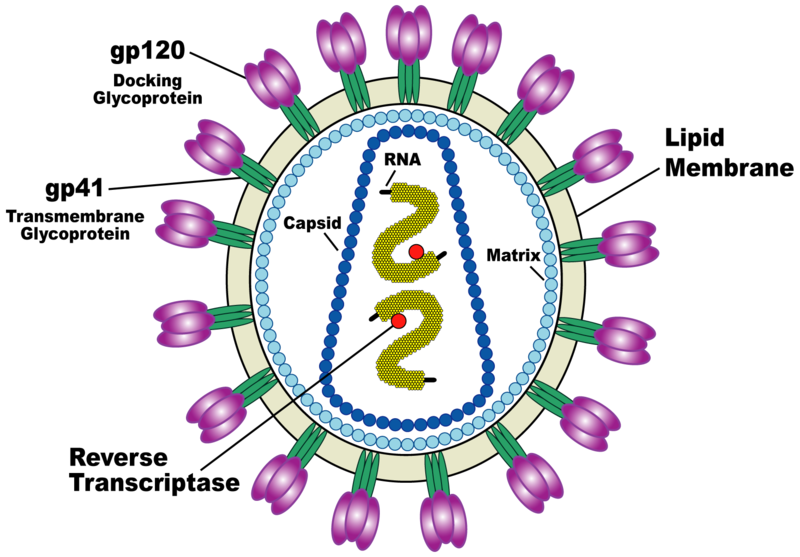 Kat - As you mentioned earlier, HIV is slightly unusual in that it converts its genome from RNA which is what we normally associate with being a message into DNA and puts that into human cells. With many viruses that infect us like the cold that I've currently got, my immune system is getting rid of the viruses and then that infection is gone. How challenging is it then, when we think about HIV and about treating HIV, that it does leave its genome within our own genome?
Kat - As you mentioned earlier, HIV is slightly unusual in that it converts its genome from RNA which is what we normally associate with being a message into DNA and puts that into human cells. With many viruses that infect us like the cold that I've currently got, my immune system is getting rid of the viruses and then that infection is gone. How challenging is it then, when we think about HIV and about treating HIV, that it does leave its genome within our own genome?
Mark - Well it's not just a matter of the virus having the ability to integrate into a host cell DNA, but the HIV and related viruses, the simian viruses, and so forth are targeting the very cells which would normally combat a viral infection. So these viruses are targeting so-called T-lymphocytes, white blood cells, which are absolutely essential for mounting effective immune responses; and they also target cells of the monocyte, macrophage, dendritic cell lineage. And those cells are again key for initiating and driving immune responses in infected individuals. So, whereas a cold virus will infect the epithelium, the cells that line the nose and the pharynx, and the immune system can be then brought to bear on those infected cells, in the case of HIV, the virus is targeting the very cells that would normally fight the infection.
Kat - Cunning stuff. So tell us a little bit about your work. What aspect of HIV are you studying and what do you hope to lead to in the future? New treatments, that kind of thing?
 Mark - Well we, for a long time, have been interested in the mechanisms through which viruses in general get into cells, the way they subvert cellular machineries to get into a target cell, and also the processes by which they then undergo assembly within those infected cells to mediate their exit. Nowadays, HIV is actually one of the best model viruses for studying those types of processes because so much research has gone into HIV over the last 15, 20 years that there's huge numbers of reagents available, lots of information available about receptors and components, etcetera that are essential. And so, HIV becomes a very useful model for these sorts of processes. But what we would really like to understand is the integrated way in which the virus recruits machinery of the target cell in order to mediate its replication. And if we can understand that in sufficient detail, then we can perhaps set about developing the sorts of novel drugs that I mentioned earlier to provide new repertoires of reagents to fight these viruses. So we're interested in the processes of virus assembly, how the virus gets released from cells, and then how it finds new target cells, gets taken up by those target cells, and reinitiates the whole cycle of replication.
Mark - Well we, for a long time, have been interested in the mechanisms through which viruses in general get into cells, the way they subvert cellular machineries to get into a target cell, and also the processes by which they then undergo assembly within those infected cells to mediate their exit. Nowadays, HIV is actually one of the best model viruses for studying those types of processes because so much research has gone into HIV over the last 15, 20 years that there's huge numbers of reagents available, lots of information available about receptors and components, etcetera that are essential. And so, HIV becomes a very useful model for these sorts of processes. But what we would really like to understand is the integrated way in which the virus recruits machinery of the target cell in order to mediate its replication. And if we can understand that in sufficient detail, then we can perhaps set about developing the sorts of novel drugs that I mentioned earlier to provide new repertoires of reagents to fight these viruses. So we're interested in the processes of virus assembly, how the virus gets released from cells, and then how it finds new target cells, gets taken up by those target cells, and reinitiates the whole cycle of replication.
Kat - It just sounds incredible. It sounds like a whole factory being hijacked. You know, a factory that makes something like nice classical music CDs, being hijacked to make Justin Beiber CDs. What have your leads been so far? Where are we heading with your kind of research in the future?
Mark - Well, one of the things that we've been working on together with colleagues in the States is that in the envelope proteins of these viruses, these are the proteins that are responsible for docking onto target cells, on the cellular side of membrane, in the cytoplasmic side, there's very conserved signals which tell that protein where to go in an infected cell. It turns out that if you mutate those signals in animal models, you completely abrogate pathogenesis. The animals will still get infected, but they're able to mount immune responses that control the virus. So we're very excited. We know what the cellular machinery is that binds those signals. And now, if we can now start to understand more about the nature of that interaction, perhaps then we can target those sites of interaction for novel drug development. But of course, this is just one specific signal and the virus will have many of those. So, the more we can find out, the more options we'll have.

40:55 - Developing an HIV Vaccine
Developing an HIV Vaccine
with Dr Peter Kwong, National Institute of Allergy and Infectious Diseases
Chris - When HIV was first discovered about 30 years ago, there was significant optimism that we'd soon have a vaccine with which we could tackle that problem. But three decades later, there still isn't one and to explain why, and how he's trying to solve the problem, from the National Institute of Allergy and Infectious Diseases in Maryland, is Peter Kwong. Hello, Peter.
Peter - Hi, Chris. How are you doing?
Chris - Very well, thank you. So what's the problem here? Why haven't we got a vaccine yet?
Peter - I think the reasons why we don't have the vaccine relate in part to some of the things that Mark was telling Kat, that is, the virus infects the human host, and that generate an immune response which is just not that effective. There's all this cellular machinery that the virus uses to cloak itself in different ways and moreover, the virus is able to integrate in such a way into T-cells that hides itself from the immune system. So you have the virus hiding out and you also have it provoking a particular response that is not so effective. So for both of those two reasons, the fact that it hides and it also provokes an inactive immune response, that has really complicated the search for a vaccine. What we really want are these broadly neutralising antibodies, antibodies who generally fight viruses and lead to good vaccines.
Chris - So what are you trying to do to combat this problem?
 Peter - Well there's been a lot of research to try to figure out what antibodies could actually effectively fight the virus. And for a long time, people thought, "There's just aren't any, people's immune systems don't effectively fight the virus". Recently however, there's been a rash of broadly neutralising antibodies that had been found in infected individuals. So if you take a screen of several thousand people, the top 1% or so turn out to have very, very good effective antibodies that can fight off the virus. And so, there's been a change in thinking from the idea that the human immune system is unable to fight the virus. And now, the change of thinking is that the human immune system can fight off the virus, or at least make broadly neutralising antibodies. It just takes it a bit of time to figure out how to do it. There's road blocks to developing those things. But fortunately for us, if we're immunising people, we have potentially a lot of time to teach the immune system, before you actually get exposed to the virus.
Peter - Well there's been a lot of research to try to figure out what antibodies could actually effectively fight the virus. And for a long time, people thought, "There's just aren't any, people's immune systems don't effectively fight the virus". Recently however, there's been a rash of broadly neutralising antibodies that had been found in infected individuals. So if you take a screen of several thousand people, the top 1% or so turn out to have very, very good effective antibodies that can fight off the virus. And so, there's been a change in thinking from the idea that the human immune system is unable to fight the virus. And now, the change of thinking is that the human immune system can fight off the virus, or at least make broadly neutralising antibodies. It just takes it a bit of time to figure out how to do it. There's road blocks to developing those things. But fortunately for us, if we're immunising people, we have potentially a lot of time to teach the immune system, before you actually get exposed to the virus.
Chris - So in your view, the way in which we need to tackle HIV is to prevent people becoming infected in the first place. So we've got to make people make that broadly neutralising immune response from a vaccine so that that repertoire of immune responses is there waiting in the uninfected person. So if they're challenged with HIV, they can fight it off because if we go in and they've already got it, it's too late.
Peter - Absolutely, Chris. The problem with a vaccine in general is that you can only fight off the virus with the vaccination, prior to infection. And so, it appears that most viruses can't be solved with drugs. If one has the flu for example, there aren't that many drugs that one can take that maybe ameliorate the disease a little bit, but that's very difficult. What's much more effective is if you come in beforehand with a vaccine to teach the immune system to fight off the virus when we have that moment of infection. And the reason for that is that, when you're initially infected, maybe only one virion, two virions, a very little number of virions will cross over. And so, if you have a vaccine that can kill, say, 99% of those, then one can protect 99% of the people that might be infected by one or so virion. On the other hand, once you're infected, you might have billions of virions. And so, if a person has a treatment that might kill 99% of them, a billion virions, if you still kill off 99%, you have 10 million left and so, one doesn't have much of an effect on an infected individual. You really want to get it at the time of infection.
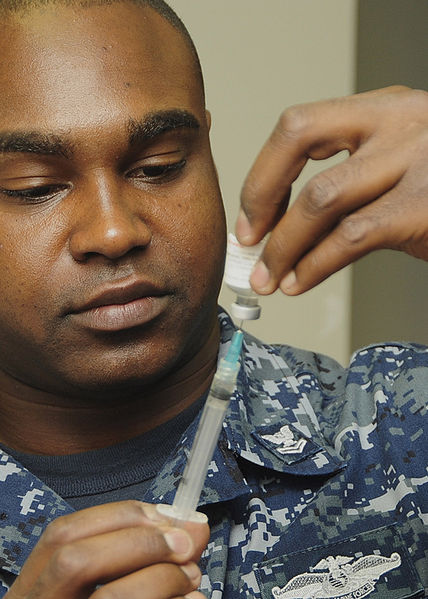 Chris - Sounding rather like a TV advert for certain kinds of surface cleaning agent! What do we think is going to take then in order to produce a vaccine that will elicit these kinds of broadly neutralising responses? What's got to go into that vaccine? What sort of response are we trying to drive against - what target on the virus?
Chris - Sounding rather like a TV advert for certain kinds of surface cleaning agent! What do we think is going to take then in order to produce a vaccine that will elicit these kinds of broadly neutralising responses? What's got to go into that vaccine? What sort of response are we trying to drive against - what target on the virus?
Peter - There are two really exciting things that have come out lately in terms of how to develop a vaccine. The first is that there was just a trial, the RV144 trial that was conducted in Thailand, where they're actually stimulated with gp120 envelope glycoproteins and found a response that's able to prevent infection or reduce the rate of infection by about 30%.
Chris - This is using the outer coat of the virus - gp120 is part of the surface marker on the virus, isn't it?
Peter - Absolutely and so, before this, people thought, "An HIV vaccine, that's just going to be impossible. That's something like going to Pluto or something. It's not something that we can actually do." With this human trial, they actually showed then HIV vaccine is possible, actually made one that's about 30% effective. Now 30% isn't that great, but if one just increases the efficacy by a factor of three, you'd be up to around 90%. So, they've already shown that it's possible and the question is how to improve it. Now, when we know that human immune systems can generate these broadly neutralising antibodies, those antibodies basically become templates for vaccine design. You basically have a useful solution, something that the human immune system can make on its own that tells you what you want to get in a vaccine. And so, there's potential sites of vulnerability, places on the virus that the human immune system can attack. Now there's just a couple of them, like the CD4 binding site, places where the virus latches on to the cell, that's the site of CD4 attachment, or some types of antibodies that are called quaternary specific, those things that only functionally work with respect to the trimer. What that means is that there are absolutely ways that the human immune system can neutralise the virus, but they're relatively complex, and we're trying to figure out exactly how to make more antibodies. But we already know that the human immune system can make these antibodies. So it's just a matter of figuring out how to trigger the human immune system to do what we already know what it can do, which is to make this effective neutralising antibodies.
Chris - How close are we to making that happen because it sounds from what you're saying, like you're thinking quite optimistically?
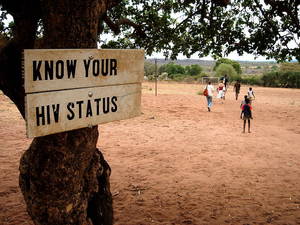 Peter - Absolutely. There's an air of optimism, but then you're asking for the timeframe on that and I think that that becomes a little bit difficult to say because just the trials alone, once we come up with something that teaches the immune system of an animal to make broadly neutralising antibodies, it's going to be at least 5 years from that stage to actually getting to work and getting into humans, and going to phase 1, 2, or 3 trials. So, the actual vaccination development process does take decades potentially, but what we're really excited about is the first couple of steps where we can show in the laboratory that this is actually going to work. And those experiments are going forwards and once you know it's in the laboratory working, then it's just a matter of time before it actually becomes a working product.
Peter - Absolutely. There's an air of optimism, but then you're asking for the timeframe on that and I think that that becomes a little bit difficult to say because just the trials alone, once we come up with something that teaches the immune system of an animal to make broadly neutralising antibodies, it's going to be at least 5 years from that stage to actually getting to work and getting into humans, and going to phase 1, 2, or 3 trials. So, the actual vaccination development process does take decades potentially, but what we're really excited about is the first couple of steps where we can show in the laboratory that this is actually going to work. And those experiments are going forwards and once you know it's in the laboratory working, then it's just a matter of time before it actually becomes a working product.
How true is it that some genes that protected people from the Black Death are the same genes that are now protecting people from HIV today?
We put this question to Mark Marsh from University College London...
There was a hypothesis a little while ago that a mutation in one of the receptor proteins; a so-called Delta 32 for CCR5, might have had some protective effects against the plague. I'm not sure that that's ever really been verified, but it's certainly true that the Delta 32 allele, if one has two copies of that gene, there's no functional receptor for the virus, so individuals with that genetic composition are in general resistant to infection.

Are humans evolving to become resistant to HIV?
We put this question to Peter Kwong from the National Institute of Allergy and Infectious Diseases in Maryland...
The answer is yes in some ways in that if enough people die off, they will evolve to be resistant, but hopefully, we don't have to go through a lot of death to have that. Hopefully, we'll be able to come up with a vaccine and just eliminate the virus that way.
Can genetically modified viruses be used to treat HIV?
We put this question to Peter Kwong from the National Institute of Allergy and Infectious Diseases in Maryland...
Peter - There are certainly things that one can do for example, genetically modify viruses as vectors for vaccines. So we can actually use viruses as tools in vaccination to induce the particular immune response that helps prevent the disease.
Chris - There was one story I saw of a group in America who were making conditionally replicating forms of HIV where they had a modified virus into which they had inserted the envelope, the surface coat protein gene, that then they put the mirror image of that gene in. So, when they infected people with this virus, if their own cells then got infected with normal HIV, it made and mobilised an anti-HIV virus which then went off around the body and protected other cells. So that maybe, I suppose, one other approach to this.
How has HIV mutated over the years?
We put this questin to Mark Marsh from University College London...
Mark - HIV mutates at a very high rate and in fact, within any infected individual there's a whole swarm of viruses rather than a single strain, and then the selective conditions within those individuals tend to select the strains which are most dominant. But HIV certainly replicates at a high rate, mutates at a high rate.
Chris - I suppose that has implications to resistance to treatment as well, isn't it?
Mark - Absolutely, yes.
Chris - People then become resistant to the drugs they're on because of this selective pressure.
Mark - Absolutely.
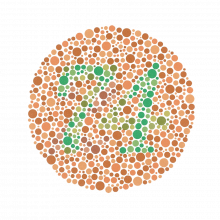
50:56 - Why can't he see red or green ink on a whiteboard?
Why can't he see red or green ink on a whiteboard?
We put this question to Petroc Sumner of Cardiff University...
To answer the question about the pens on the whiteboard, basically, this doesn't sound to me like a simple case of red, green colour blindness, but it might be a case of red, green colour blindness combined with something else. Basically, in the eye, we have two types of receptor called rods and cones. The rods do night time vision when things are relatively dark and the cones do daytime vision. It's often a misnomer that cones only do colour vision, but they also do light and dark vision during the day when the rods are not active. If you are red/green colour blind, it means that you don't have one type of cone. But that doesn't mean that you can't distinguish any colours and it also means that you should still be able to distinguish things at different lightness. So for example, yellow and brown or grey and white would still be pretty clearly distinguished for you. And because white on a whiteboard is basically the lightest colour, anything that's coloured is normally darker than white which means that even though you might not be able to tell the difference between the red and the green pens, you should be able to tell the difference between the white board and the red and the green pens, because both of the pens will be darker than the white board. So that's why it doesn't sound like it's just a simple case of red, green colour blindness.
Diana - So distinguishing coloured marks from their background shouldn't be a problem. What else could be going on?
Petroc - Having said that, the green and red pens will be less dark than say, a black or a blue pen would be. You can show this actually by doing a little experiment which I just did myself. I wrote red and green writing on my whiteboard, I shut the curtains, made it as dark as possible in the room, turned the lights out, waited until I was accustomed, and then it's clear to me that even though I've now lost my colour vision because I'm seeing with my rods, and not my cones anymore, I can still see both the red and the green writing. But you should also see that the green is less distinct than the red and the red is less distinct than black writing, and that's because both the coloured pens won't be as dark as the black pen. You can then imagine that if you combined this, not having colour vision with say, not being fully able to see the thin lines. So if you squint at these lines for example, you'll probably see that they disappear or I can get the green one to disappear with some kind of squint at it, and that might be sort of simulating if I wasn't wearing my glasses or if I had some other reason in my eye, that I wasn't so sensitive to contrast or to acuity. So that's why maybe a colour blindness associated with something else could mean that you wouldn't be able to see these pens on a whiteboard. The reason a colour blind person wouldn't be able to see a laser pointer on a whiteboard is because it isn't darker than the whiteboard. A laser pointer is adding light to the whiteboard of course, and so, it isn't darker than the whiteboard. It only differs in colour and that's why a colour blind person would have difficulty seeing the red laser pointer on a whiteboard.
Diana - Colour blindness occurs when certain types of cones in the eyes aren't present, but the person in the question sounds as if he had some cones. Perhaps it's more of an issue with detecting differences in luminosity or the brightness of surfaces.










Comments
Add a comment